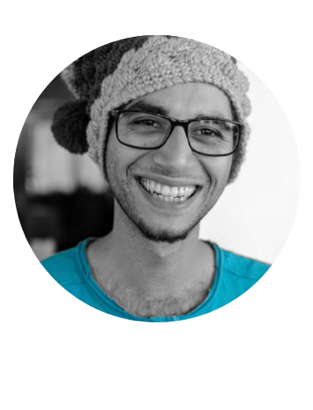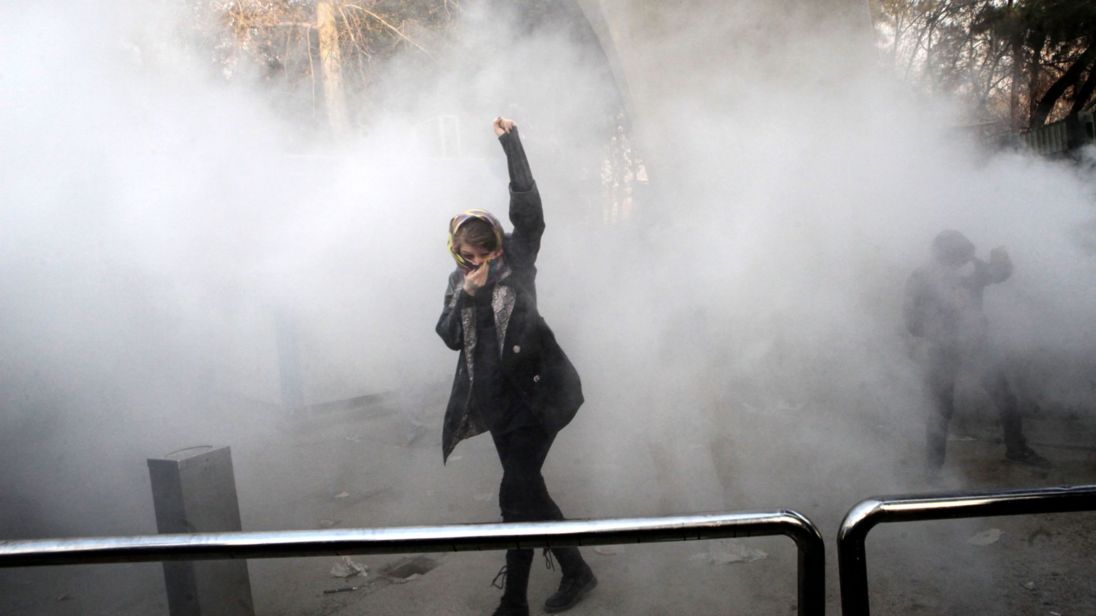933

Of course everyone knew! Amidst family photos, selfies, and anecdotes, other types of pictures have surfaced on social media. These images have spread, bit by bit, news of horror across the country: homeless sleeping in empty graves, 3 to 7 million child labourers employed, humans used as border couriers in Kurdistan, an unfolding fresh water crisis in major cities, a soaring number of ghost towns around Mashahd, rows and rows of homeless sleeping on the streets of Tehran, lake Urmia drying up, workers losing their money to banks and depository institutions, the poor selling their organs to the rich, workers not getting paid for almost 30 months, one million people without the right to study, 20 people committing suicide in the aftermath of the earthquake that shook Kermanshah in November 2017. The list could go on.
We knew, but we could not believe that the poor we had seen on the screens of our phones and TVs, would actually take to the streets.
But, whom do I mean by the “we”? I am referring to the 42% of Iranians who have mobile phones; the 20 million users of Instagram; the Iranians who live in big and medium-size cities and are economically “better-off”. The word “middle class” or “bourgeoisie” cannot be applied to this strata, which is more like a socialist state “intelligentsia,” dangling between the nomenklatura and the workers & peasants. It is safe to say that this middle strata has no real, political power except a symbolic one of consumption. Major industries in Iran are state-owned, and the private sector is directly or indirectly run by semi-governmental institutions or by the Revolutionary Guard, which since 1979 constitutes the armed branch of the regime. The middle strata have ideological differences with the regime, and distrust the poor. At first, folks from the middle strata received the news of protes

ts with suspicion. Then, they joined the protests only on social media and small-scale demonstrations (except for the capital). And finally they became fearful of foreign influence and the regime’s crackdown.
The 1979 revolution is called the revolution of paupers by the regime and in common parlance among the consumerist strata. The Islamic Republic has used many strategies, such as creating religious centers in villages and small cities, and several entities, such as Basij, who can basically be conceptualized as Islamic boy scouts with real guns, to spread its propaganda in poor areas and widen the ideological chasm between the middle strata and the poor. It is no surprise that there has been a bitter relationship between the arrogant city folks and the poor and marginalized in the countryside. The regime and the middle strata have always considered the poor as the support base of the regime. An uncanny remark of an elderly Iranian acquaintance, a devoted Marxist, illustrates this dynamic: “the reason we cannot have freedom is because of the workers!”
And so, we knew that blue-collar and farm workers have protested 933 times since March 2017, and yet could not believe that they would demand liberty next to work and bread. In his latest article, Murtaza Hussain points out that protests took many by surprise, but not the labor activists. Hussain is right, but not quite. Could anyone have guessed that the supposed support base of the Islamic Republic of Iran would demand a referendum on the regime? This movement was surprising to the extent that Rouhani’s immediate response was to blame his conservative right-wing opponent for triggering the protests. The beauty of the current movement is exactly the surprise, which should be no surprise at all. It showed the middle strata that the poor have similar political demands.
80000000000000
Cities in Iran do not have safe public spaces. Different methods of surveillance push people into their homes: the private has become the public. Hence the growth of online agoras as substitutes of public space in particular Instagram and Telegram. And where there is public space, the culture of dandyism and flaneurism follows. The harrowing images of poverty on social media were juxtaposed with the unbearable wealth of the rich Kids of Tehran, the custodians of holy shrines, and the regime’s oligarchs.
The effect of shock at this experienced by an average Iranian may be replicated by attempting to read out loud the following numbers:
80,000,000,000,000 Rial (2,003,520,000 EUR)
30,000,000,000,000 Rial (751,320,000 EUR)
1,230,000,000,000 Rial (308,041,200 EUR)
Reporters have difficulty reading these amounts of embezzlements in the recent corruption scandals, and people have difficulty registering them. It is difficult to compare these numbers to the average salary of a day-laborer, which stands at 234 EUR a month. The average monthly salary of blue-collar and white-collar workers ranges between 300 and 2595 EUR in big cities. Only 40.9% of the working-age population has full-time, part-time or hourly work, and 25.9 percent of youth between 15-29 are unemployed. Inflation stands at more than 10 percent and the price of foodstuff has risen by 40%. In smaller cities and peripheral counties, unemployment is higher and the average salaries are lower. Those small cities that immediately joined the country-wide demonstrations in late December, such as Izeh, Kermanshah and Kerman, were the ones with one-sixth or higher unemployment rate among the working-age population.

We all knew about the corruption and the dire state of economy, but what were we supposed to do? The Green Movement’s political protests in 2009 against the suspicious re-election of Mahmoud Ahmadinejad, and electing Rouhani as the president in 2013, have neither helped the economy, nor brought more freedom. Rouhani’s main promises were to lift the economic sanctions imposed by the United States and UN Security Council), combat corruption and establish civil liberties. The systematic corruption and suppression of civil liberties continued. The middle strata was too cynical about any change and not ready for the December protests.
2005
2005 was the year that right-wing populism won the presidential election in Iran. The middle strata boycotted the elections, and Mahmoud Ahmadinejad who “represented” the poor became the president. A humble father who had only one set of garments, and would end economic oligarchy, establish a “justice economy,” reduce the un-Islamic habits of city folks, fight imperialism and bring a new order to the world, he managed to divide the country as never before. The middle strata and the poor resented each other; the poor considered the middle strata as agents of imperialism and the latter accused the former of false consciousness.
Ahmadinejad was the favorite of Supreme Leader, who at the end of the day gets a final word in all political, electoral, judiciary, economic, religious and military of the Republic. Ahmadinejad’s mission was to further open the doors of economy and politics to the Revolutionary Guard. The Revolutionary Guard was also given greater role in the proxy wars of the region, meaning more military embeddedness in the regional conflicts at odds with Saudi Arabia.
The international community greeted Ahmadinejad’s policy by imposing sanctions on Iran, which consequently led to intricate webs of corruption and money laundering. The most severe blow to the society, however, was Ahmadinejad’s economic policies. Instead of focusing on creating jobs, part of his so-called “justice economy” was to distribute to households cash handouts from oil exports. Supporting farmers and small businesses was not a priority either; his administration preferred preferred to intervene on the consumption end, importing cheap foodstuffs and primary goods to keep prices low. To hide the effect of his disastrous decisions, Ahmadinejad absolved the Management and Planning Organization, which was responsible for preparing the country’s budget and providing statistics.
These policies are key moments in the path that has led to the current demonstrations. One of the major demands of the protesters is to cut the budget of the Revolutionary Guard, which is heavily involved in wars in Yemen and in Syria, and strongly present in Iraq. The Revolutionary Guard’s ballistic experiments, and its deadly adventures in the region have been extremely costly, and not only in monetary terms. One of the triggers of the demonstrations was an announcement by the head of the parliament that Iran will not stop “helping” Syria, no matter the costs. Another trigger was Rouhani’s decision to cut the cash handouts introduced by Ahmadinejad. We all know the economical disasters of the direct subsidies, but what can be done when some households cannot afford losing the cash?
3700
Terror is the only tool Islamic Republic of Iran uses to solve domestic issues. Surveillance, arrests and punishment are deployed on daily basis, especially against those who disagree with the regime or its policies. This method has made society increasingly cynical, unwilling to express their politics openly, but has proven effective for the regime.
To subdue the current unrest, the regime has done what it knows best. Around 3700 individuals have been arrested and more than 20 have been killed. Among those arrested are students, intellectuals and unionists with left tendencies, who have not been involved in the current demonstrations. These arrests were executed as a preventive action against committing crimes. In other words, the regime is concerned about the weak, but potentially explosive connection and solidarity between middle strata and the poor.
Meanwhile to calm the protesters, the Supreme Leader, the President, and the Parliament have issued statements about the right of people to protest. And yet, they have also accused Saudi Arabia, the U.S and Israel of organizing these protests. Such accusation is a well known and a usual signal that ordinary Iranians understand: that regime will not tolerate more protests, and protesters will be persecuted severely. This method might prevent the middle strata from getting involved in the demonstrations, but whether it can prevent the poor remains an open question.


